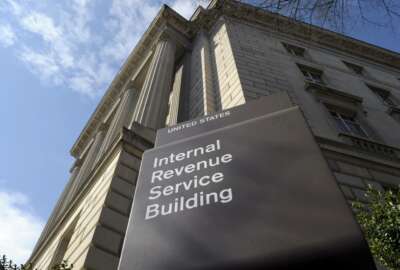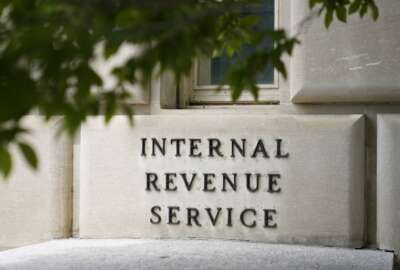IRS to eliminate ‘oceans’ of paper by digitizing all new tax returns by 2025
The IRS is dipping into its multi-year modernization funds to digitally process all the tax returns it receives by 2025 — a major shift for an agency that still...
The IRS is dipping into its multi-year modernization funds to digitally process all the tax returns it receives by 2025 — a major shift for an agency that still relies heavily on paper forms.
Treasury Secretary Janet Yellen said that by the 2025 filing season, the IRS will digitally process all the tax returns it receives, as well as half of all paper-based correspondence, non-tax forms and notice responses.
The IRS will also start to digitize more than a billion historical documents, which will give taxpayers greater access to their records, and will save the agency about $40 million in annual storage costs.
More immediately, taxpayers will have the option to go paperless with their IRS correspondence by next year’s filing season.
Yellen, speaking at an IRS facility on Wednesday, said the IRS under the Inflation Reduction Act is transforming “into a digital-first agency.”
“This paperless processing initiative is the key that unlocks other customer service improvements,” Yellen said. “It will enable taxpayers to see their documents, securely access their data and save time and money.”
The IRS expects its paperless processing initiative will eliminate up to 200 million pieces of paper annually, cut processing times in half, and expedite refunds by several weeks.
“Despite previous modernization efforts, the IRS has remained in large part, a paper-based agency,” Yellen said.
The IRS receives about 76 million paper tax returns and forms, and 125 million pieces of correspondence, notice responses, and non-tax forms.
IRS Commissioner Danny Werfel said the paperless processing initiative will cut tax return processing times in half, and could expedite the tax refunds by several weeks.
Werfel said these improvements will also lead to faster refunds for taxpayers who still opt to file paper tax returns.
“People can still send paper in, but once it gets to the IRS, we want to be able to scan and digitalize these forms, reducing paper and adding efficiency,” he said.
Werfel said the IRS through this initiative will convert the “oceans of paper” that arrive at its doors into a digital format before it ever leaves the agency’s mailroom.
Yellen and Werfel both touted the IRS’s modernization efforts less than a year since the Inflation Reduction Act was signed into law.
The IRS initially received $80 billion in the Inflation Reduction Act to rebuild its workforce and modernize its legacy IT over the next decade. But the Biden administration and House Republicans agreed to scale those funds back to about $60 billion, as part of an agreement to raise the debt ceiling earlier this year.
“Today’s announcement, and the other milestones that we’ve already reached are a testament to what dedicated federal employees can do when they’re provided the tools and the resources to succeed,” Yellen said.
Werfel said the IRS’s reliance on paper-based processes means the agency often “feels more like the 1970s and the 1980s than the 21st century.”
“It is a very clear example of how with the right funding, and the right priorities, we can relatively quickly move the IRS operations decades forward,” he said.
Those paper-based processes, he added, pushed the IRS to a breaking point at the height of the COVID-19 pandemic. With most of its workforce under mandatory remote work orders, the IRS quickly became inundated with unprocessed tax returns and unread tax correspondence.
The IRS became besieged by a massive volume of paper tax returns and unopened mail at the height of the COVID-19 pandemic, which led to unprecedented backlogs and tax refund delays.
Yellen said the IRS has fully cleared its backlog of 2022 individual returns that have no errors.
Werfel said photographs, including those captured last year by the Washington Post, of an IRS cafeteria at its Austin, Texas campus, filled will millions of paper documents, underscored the severity of its paper problems.
“It’s time to ensure that no cafeteria in the IRS ever looks like that again,” he said.
The vast majority of taxpayers file their taxes electronically, but it takes the IRS employees much longer to manually process the paper tax returns it still receives.
Werfel said that up until now, IRS employees have had to manually input numbers by hand to process paper tax returns.
“This is very time-consuming and costly when compared with electronically filed returns,” he said.
Werfel added that the scanning process is “completely safe and secure,” and that the agency will continue to monitor its process to ensure that taxpayer data remains protected.
Werfel said the IRS’s new Transformation and Strategy Office will oversee efforts to accelerate scanning as part of its overall Strategic Operating Plan, and that the IRS is “exploring numerous ways that we can better use technology to make the entire tax process more efficient.”
The IRS is setting these digitization goals after it announced last month that it would invest heavily in new scanners.
Yellen said that in the first quarter of this year, the IRS scanned 80 times more paper returns than in all of 2022
Werfel told reporters in July that the agency is using money in the Inflation Reduction Act to replace more than 200 outdated scanners, which will help the agency quickly process incoming tax returns and correspondence.
Werfel added that IRS plans to purchase 700 modern scanners in total, and that these investments will “drive IRS efforts to provide world-class customer service.”
To address a major backlog in paper tax returns, the IRS in recent years relied on overtime and pulled IRS employees off their regular jobs and into “surge teams” to process mail and paper tax forms.
Copyright © 2025 Federal News Network. All rights reserved. This website is not intended for users located within the European Economic Area.
Jory Heckman is a reporter at Federal News Network covering U.S. Postal Service, IRS, big data and technology issues.
Follow @jheckmanWFED






